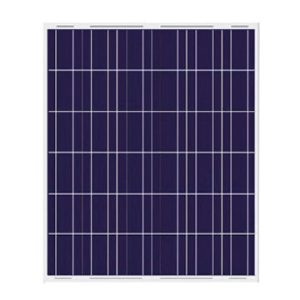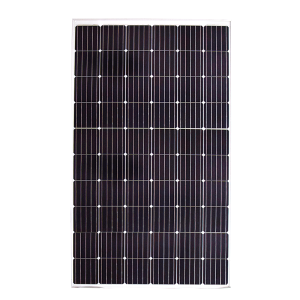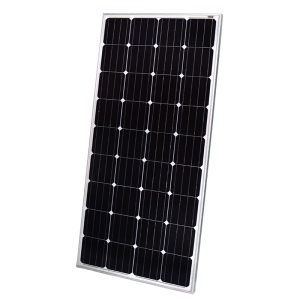Installing a 25 kW solar system can be a significant investment for homeowners, but it offers substantial long-term savings and environmental benefits. By harnessing the power of the sun, you can reduce your reliance on traditional energy sources and significantly lower your monthly electricity bills. This comprehensive guide will provide you with a detailed understanding of the costs, energy production estimates, incentives, and strategies to maximize your savings with a 25 kW solar system.
Understanding the Costs of a 25 kW Solar System
Upfront Installation Costs
Installing a 25 kW solar system can be a significant investment, with costs ranging from $51,245 to $90,250 after applying the federal solar tax credit. The exact cost will depend on several factors, including the type of solar panels, inverters, racking systems, and labor costs in your area.
According to EnergySage, the average cost of a 25 kW solar system in the United States is $69,250 before the federal tax credit. However, prices can vary significantly by state, with higher costs in states like Massachusetts, New York, and Colorado, and lower costs in states like Arizona, Florida, and Texas.
It’s essential to obtain multiple quotes from reputable solar installers in your area to ensure you get the best deal. Homeowners who compare multiple offers on platforms like EnergySage can save up to 10% or more on their solar system costs.
Maintenance and Repair Costs
While solar panels are designed to be low-maintenance, there are still some ongoing costs to consider. Regular cleaning and inspection of the system are recommended to ensure optimal performance. Additionally, inverters and other components may need to be replaced after several years of use.
According to SolarReviews, the average annual maintenance cost for a residential solar system ranges from $200 to $500. However, these costs can vary depending on the size of your system, the complexity of your roof, and the frequency of maintenance required.
Potential Impact on Home Resale Value
Installing a 25 kW solar system can potentially increase the resale value of your home. According to a study by the Lawrence Berkeley National Laboratory, homes with solar panels sold for an average of 4.1% more than comparable homes without solar systems.
However, the impact on resale value can vary depending on factors such as the age of the solar system, the remaining warranty period, and the local real estate market. It’s essential to work with a knowledgeable real estate agent who can accurately assess the value added by your solar system when it comes time to sell your home.
Estimating Energy Production and Savings
Location and Sunlight Exposure
The amount of energy your 25 kW solar system will produce depends heavily on your location and the amount of sunlight exposure your roof receives. According to SunWatts, a 25 kW solar system can produce an estimated 3,200 kilowatt-hours (kWh) of alternating current (AC) power per month, assuming at least 5 sun hours per day with the solar array facing south.
However, this estimate can vary significantly based on your location. For example, a 25 kW system in Las Vegas, Nevada, can produce an average of 3,664 kWh per month, while the same system in Boston, Massachusetts, would produce only 2,752 kWh per month, according to EnergySage.
Roof Orientation and Shading
The orientation of your roof and the amount of shading it receives can also impact the energy production of your solar system. Ideally, your solar panels should be installed on a south-facing roof with minimal shading from trees, buildings, or other obstructions.
According to MarketWatch, if your roof is shaded or faces a less optimal direction, your panels may not generate enough energy to offset the upfront installation cost. However, if your roof is unshaded and faces south, southwest, or west, your panels will receive more direct radiation from the sun and generate more solar energy.
Energy Consumption Patterns
To accurately estimate your potential savings with a 25 kW solar system, it’s essential to understand your household’s energy consumption patterns. According to the U.S. Energy Information Administration, the average household uses around 893 kWh of electricity per month.
If your household’s energy consumption is higher than average, a 25 kW solar system may be able to offset a significant portion of your electricity bills. However, if your energy consumption is lower, you may not see as much savings, and a smaller solar system might be more appropriate.
Leveraging Solar Incentives and Rebates
Federal Solar Tax Credit
One of the most significant incentives for homeowners installing solar systems is the federal solar tax credit, also known as the Investment Tax Credit (ITC). This credit allows you to deduct 26% of the cost of your solar system from your federal taxes.
For example, if you install a 25 kW solar system with a total cost of $69,250, you could claim a tax credit of $18,005, effectively reducing the net cost of your system to $51,245.
It’s important to note that the federal solar tax credit is scheduled to phase out gradually, with the credit dropping to 22% in 2023 and expiring for residential systems in 2024. Therefore, it’s crucial to take advantage of this incentive while it’s still available.
State and Local Incentives
In addition to the federal tax credit, many states and local governments offer their own incentives and rebates for solar installations. These incentives can vary significantly by location and can include:
- State tax credits: Some states offer additional tax credits on top of the federal credit, further reducing the cost of your solar system.
- Solar Renewable Energy Certificates (SRECs): In certain states, you can earn income by selling the SRECs generated by your solar system.
- Rebate programs: Some utilities and local governments offer upfront rebates or performance-based incentives for installing solar systems.
It’s essential to research the specific incentives available in your state and local area, as they can significantly impact the overall cost and payback period of your solar system.
Net Metering Programs
Net metering is a billing mechanism that allows homeowners with solar systems to receive credits for the excess energy their system produces and sends back to the grid. These credits can then be used to offset the cost of electricity you draw from the grid when your solar system is not producing enough energy to meet your household’s needs.
The benefits of net metering can vary by state and utility provider. Some states offer energy credits at a value that matches the retail energy price, while in other areas, the value can be much lower, reducing your potential savings.
It’s crucial to understand your local utility’s net metering policies and factor them into your calculations when estimating the potential savings from your 25 kW solar system.
Optimizing Energy Consumption for Maximum Savings
While installing a 25 kW solar system can significantly reduce your electricity bills, optimizing your energy consumption can further maximize your savings. Here are some strategies to consider:
Energy Efficiency Upgrades
Before installing a solar system, it’s recommended to make energy efficiency upgrades to your home. This can include:
- Insulation improvements: Properly insulating your home can reduce heating and cooling costs, lowering your overall energy consumption.
- Energy-efficient appliances: Replacing old appliances with Energy Star certified models can significantly reduce your energy usage.
- LED lighting: Switching to LED bulbs can reduce your lighting energy consumption by up to 75%.
By reducing your energy consumption through efficiency upgrades, you can potentially downsize your solar system and save on upfront costs while still meeting your energy needs.
Smart Home Automation
Smart home technology can help you optimize your energy consumption by automating and controlling various systems in your home. For example, smart thermostats can learn your preferences and adjust the temperature accordingly, reducing energy waste.
Additionally, smart plugs and switches can automatically turn off devices when they’re not in use, further reducing your energy consumption and maximizing the savings from your solar system.
Load Shifting and Battery Storage
Load shifting involves shifting your energy consumption to times when your solar system is producing the most energy, typically during the day. This can be achieved by running energy-intensive appliances, such as washing machines and dishwashers, during peak solar production hours.
Installing a battery storage system can also help you maximize your savings by storing excess energy produced by your solar system during the day for use at night or during periods of low solar production.
Real-World Case Studies and Testimonials
To provide a more relatable and practical perspective, we will include real-world case studies and testimonials from homeowners who have installed a 25 kW solar system. These case studies will highlight the actual savings achieved, the challenges faced during installation, and the overall experience of going solar.
By including these real-world examples, readers will gain a better understanding of the potential benefits and drawbacks of installing a 25 kW solar system, as well as practical tips and insights from those who have gone through the process.
Choosing the Right Solar Provider
Finally, it’s crucial to emphasize the importance of choosing the right solar provider for your 25 kW solar system installation. Key factors to consider when selecting a provider include:
- Experience and reputation: Look for a provider with a proven track record and positive customer reviews.
- Quality of equipment: Ensure the provider uses high-quality solar panels, inverters, and other components from reputable manufacturers.
- Warranty and support: Understand the warranty coverage and ongoing support provided for your solar system.
- Financing options: Explore financing options offered by the provider, such as leasing or power purchase agreements, to make the upfront costs more manageable.
By carefully evaluating and selecting the right solar provider, homeowners can ensure a smooth installation process and maximize the long-term benefits of their 25 kW solar system.
Conclusion
Installing a 25 kW solar system for your home can be a significant investment, but it offers substantial long-term savings and environmental benefits. By following the strategies outlined in this comprehensive guide, homeowners can maximize their savings, leverage available incentives and rebates, optimize energy consumption, and make an informed decision when choosing a solar provider.
With a well-planned and executed solar system installation, homeowners can enjoy the benefits of clean, renewable energy while significantly reducing their monthly electricity bills and contributing to a more sustainable future.



